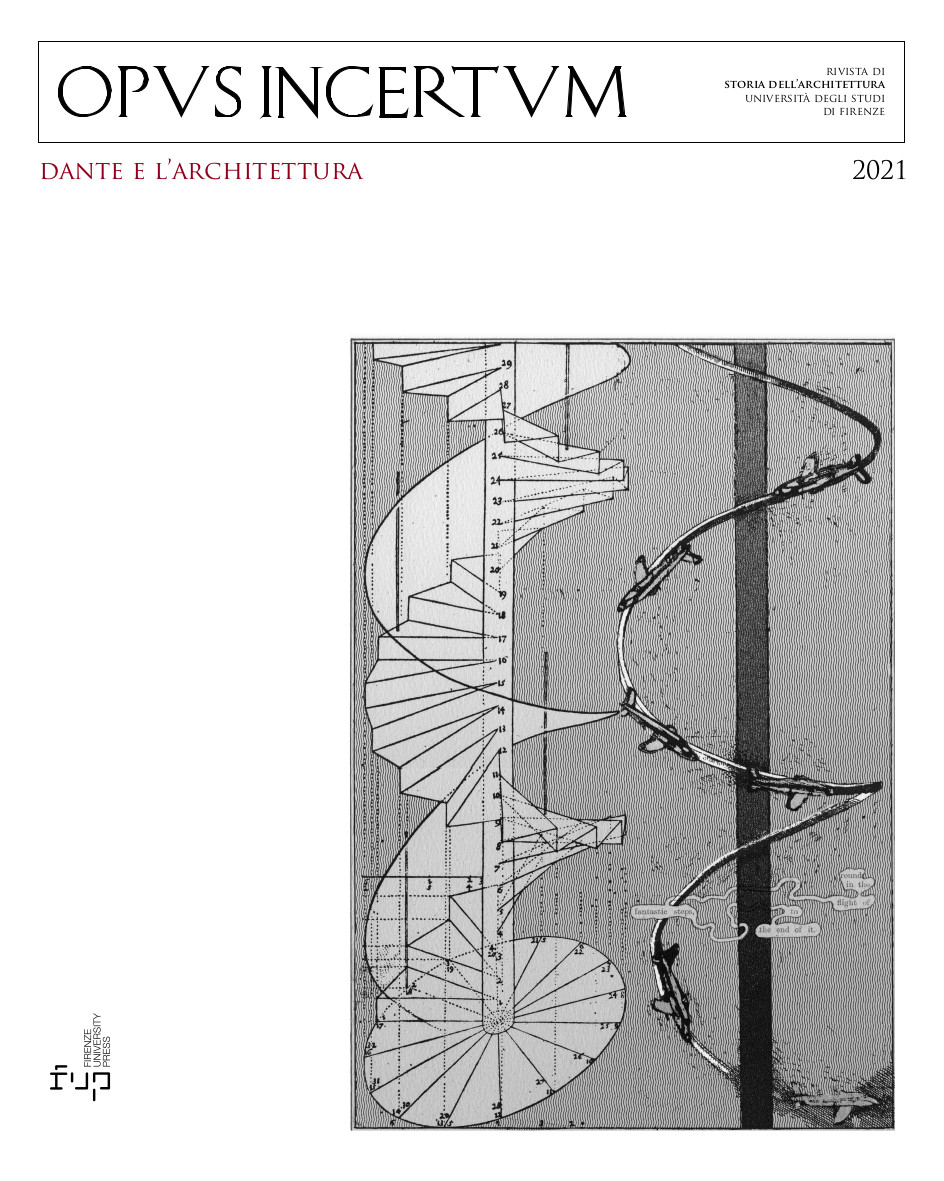Published 2021-12-11
Keywords
- Dante’s afterworld,
- Dante’s topography,
- Comedy structure,
- Benedetto Croce,
- contemporary artists
How to Cite
Abstract
The essay traces in greatly summarised form the history of the reception of Dante in the visual arts, focusing on the various ways in which painters, sculptors and architects have, through the ages, given visual substance to the peculiar physical and structural reality of Alighieri’s afterlife. The article offers a minimal survey of this production, identifying two historical periods in which the structure of the poem and the worlds invented by Alighieri are privileged with respect to the story of the pilgrim’s journey. The first phase, which went from the middle of the 15th century to the late 16th century, and involved scientists, intellectuals, painters, sculptors and architects, is already widely known. The essay summarises the essential data, opening up to almost forgotten drawings produced by anonymous artists at the beginning of the 16th century. The second phase has just begun and is still to be written. The essay considers a number of works produced by contemporary artists to illuminate how they look again at the structures created by Dante and use them as graphic supports of great symbolic value which are capable of representing and judging the present.


